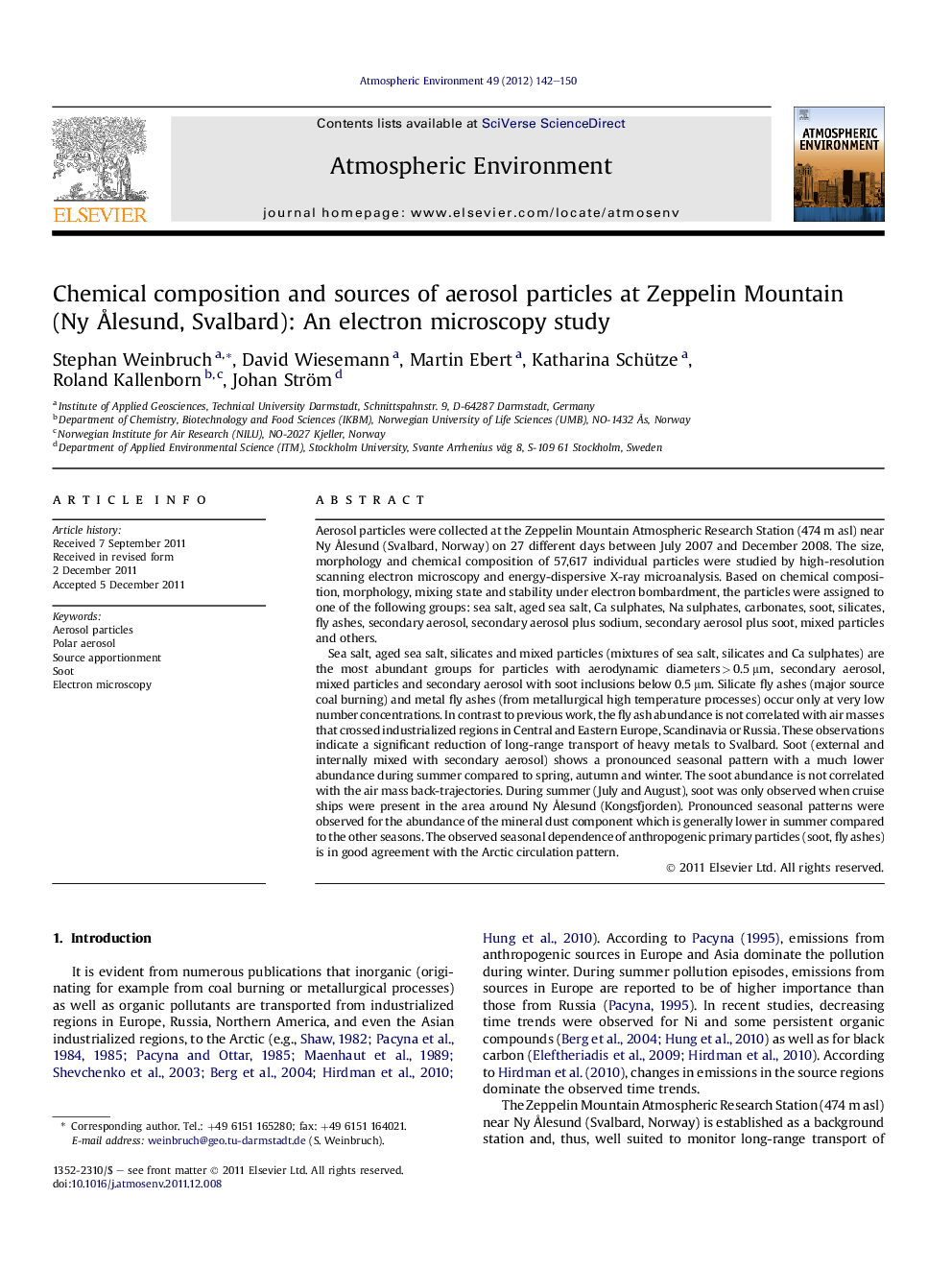| کد مقاله | کد نشریه | سال انتشار | مقاله انگلیسی | نسخه تمام متن |
|---|---|---|---|---|
| 4439072 | 1620422 | 2012 | 9 صفحه PDF | دانلود رایگان |

Aerosol particles were collected at the Zeppelin Mountain Atmospheric Research Station (474 m asl) near Ny Ålesund (Svalbard, Norway) on 27 different days between July 2007 and December 2008. The size, morphology and chemical composition of 57,617 individual particles were studied by high-resolution scanning electron microscopy and energy-dispersive X-ray microanalysis. Based on chemical composition, morphology, mixing state and stability under electron bombardment, the particles were assigned to one of the following groups: sea salt, aged sea salt, Ca sulphates, Na sulphates, carbonates, soot, silicates, fly ashes, secondary aerosol, secondary aerosol plus sodium, secondary aerosol plus soot, mixed particles and others.Sea salt, aged sea salt, silicates and mixed particles (mixtures of sea salt, silicates and Ca sulphates) are the most abundant groups for particles with aerodynamic diameters > 0.5 μm, secondary aerosol, mixed particles and secondary aerosol with soot inclusions below 0.5 μm. Silicate fly ashes (major source coal burning) and metal fly ashes (from metallurgical high temperature processes) occur only at very low number concentrations. In contrast to previous work, the fly ash abundance is not correlated with air masses that crossed industrialized regions in Central and Eastern Europe, Scandinavia or Russia. These observations indicate a significant reduction of long-range transport of heavy metals to Svalbard. Soot (external and internally mixed with secondary aerosol) shows a pronounced seasonal pattern with a much lower abundance during summer compared to spring, autumn and winter. The soot abundance is not correlated with the air mass back-trajectories. During summer (July and August), soot was only observed when cruise ships were present in the area around Ny Ålesund (Kongsfjorden). Pronounced seasonal patterns were observed for the abundance of the mineral dust component which is generally lower in summer compared to the other seasons. The observed seasonal dependence of anthropogenic primary particles (soot, fly ashes) is in good agreement with the Arctic circulation pattern.
► Chemical composition of aerosol particles in the Arctic background.
► Long-range transport of fly ashes from coal burning and metallurgy declined.
► Soot shows a pronounced seasonal concentration pattern (highest in winter/spring).
► The mineral dust abundance among coarse particles is lowest in summer.
Journal: Atmospheric Environment - Volume 49, March 2012, Pages 142–150